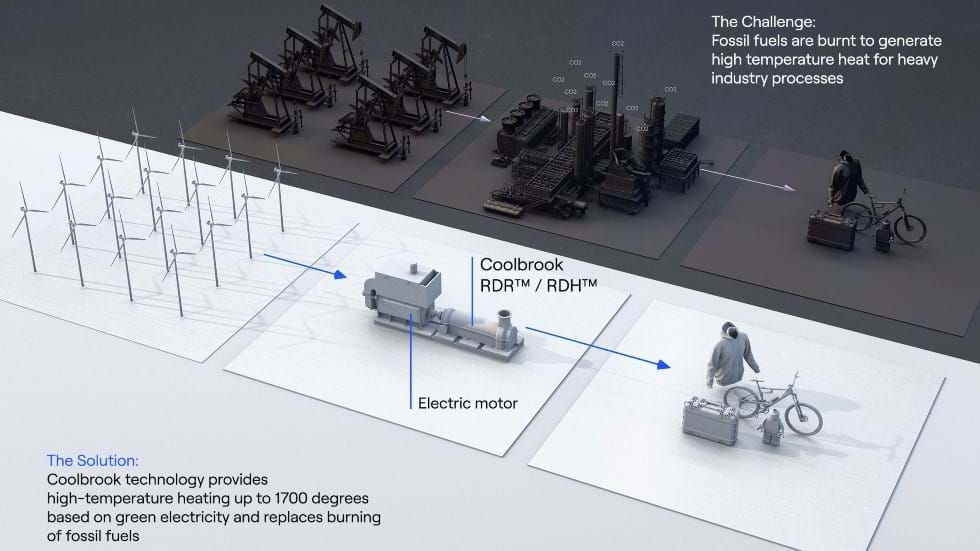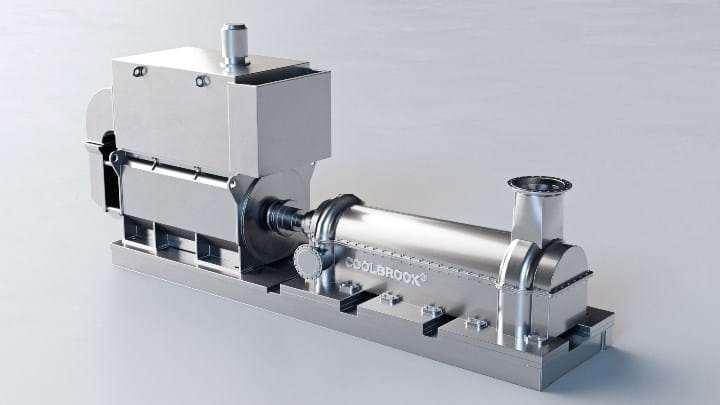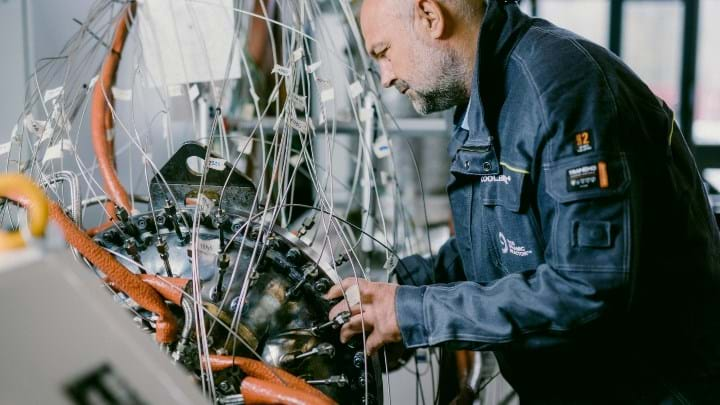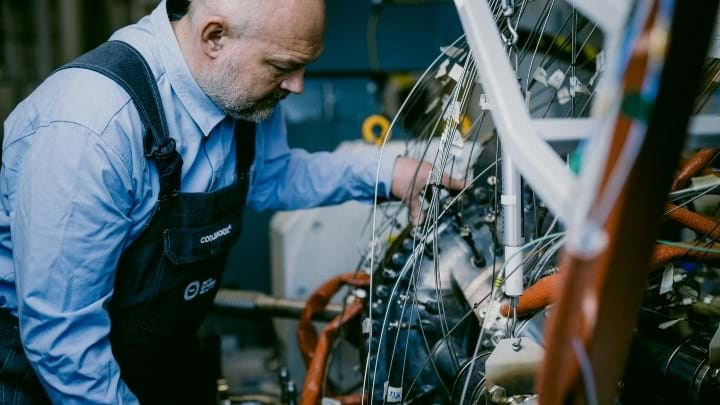Vendor Viewpoint: How RotoDynamic Technology enables clean olefin production
Coolbrook CEO Joonas Rauramo charts the path to fully electrified steam cracking, a game-changing technology that could slash global CO2 emissions
THE GLOBAL olefins market is forecast to grow to around US$350bn by 2030, up from US$240bn in 2022. But it’s not just the market that’s heating up: to keep global warming beneath the 1.5-degree target, this high-emission industry must rapidly decarbonise. Today, ethylene plants emit 300m t/y of carbon dioxide (CO2) per year – that’s as much as the entirety of France.
So, how can petrochemical manufacturers keep pace with soaring demand while honouring the net zero commitments that many companies and industry bodies have signed up to? Coolbrook’s RotoDynamic Reactor (RDR) – a breakthrough technology that combines principles of rocket science, turbomachinery, and chemical engineering – could hold the answer.
With fully electrified steam cracking, higher yields, and reduced operational and capital expenditure, we believe RDR is perfectly placed to usher in a clean industrial revolution in olefin production.
The planet-saving case for electrifying the olefin industry

While iterative advancements in industrial furnace technology have led to greater efficiencies and thus less fuel demand, decarbonisation is only possible if fossil fuels are removed from the manufacturing processes. There is more at stake here than reducing emissions: the pandemic and the war in Ukraine both revealed the vulnerability of supply chains to political and economic turbulence. In such a climate, finding ways to replace fossil fuels with renewable energy sources can reduce both risk and costs for industrial operators.
Growth in the demand for oil is forecast to rapidly decline by 2028 as the affordability of renewables and carbon taxes disincentivise further fossil fuel investment, after which there will be a gradual and then exponential global shift to a clean energy economy. This makes weaning off fossil fuels an imperative for all industries, and petrochemicals producers should be seeking ways to futureproof their production to ensure they can make the transition smoothly. Being an early adopter in the transition will allow producers to reap green premiums with their products and convince customers, regulators, and other key stakeholders regarding the future viability of olefin production.
Direct electrification using renewable energy is a prime candidate for managing the transition to clean and sustainable olefin production. Societies and the industries they support have more than a century of operational experience with electricity, making it far easier to “plug in” to existing infrastructure than source alternative fuels, many of which are unproven at scale and lack the ubiquity of electric energy.
Electricity supply itself is also rapidly decarbonising, with 60% of Europe’s electricity mix already CO2-free and the global mix is forecast to almost fully decarbonise by 2040. Even if the local supply is not currently net zero, olefin manufacturers can prepare infrastructure for when it is, and enjoy an immediate, sharp reduction in end-to-end emissions the moment supply switches to renewable sources.

Coolbrook’s RotoDynamic Reactor technology is a fully electric solution for steam cracking. Where standard steam cracking heats hydrocarbon feedstocks externally using a furnace, RDR uses the proven principles of turbomachinery to heat the feedstock directly. In simple terms, it is a gas turbine in reverse: instead of heating gas to rotate blades and generate power, electric motors rotate blades to generate heat in the gas. This replaces the burning of fossil fuels in the manufacturing process and, when the electricity is from a carbon-free source, eliminates carbon emissions. RDR Technology is also fully compatible to operate with renewable and recycled feedstocks and provides significant room for further value chain emissions through transition to renewable and circular materials.
RDR is not just cleaner, it outperforms steam cracking furnaces too
Any electrification solution intended to replace fossil fuel furnaces must also at least match its predecessor in output and efficiency to minimise the commercial impact of the investment. Even if emissions were not a factor, RDR technology outperforms fossil fuel furnaces (a technology that has not substantially changed in more than 70 years), while also simplifying olefin plant operations.
The most significant improvement comes courtesy of the speed at which RDR technology operates. Conventional furnaces are slower to heat the feed mixture, resulting in a longer residence time which exposes initially formed olefins to unwanted secondary reactions, reducing the ultimate yield. Replacing fossil fuels with alternatives will not solve this problem, as heat transfer through the tube walls of the furnaces has reached its physical limits.
Combined with other technical benefits – including reduced steam ratios and decreased flaring-related product losses due to very short startup and shutdown times – this less than 20ms residence time results in RDR producing up to 20% higher ethylene yields compared to conventional furnaces. For petrochemical producers, that translates into increased annual profits of over US$200m per 1m t of ethylene produced.

Along with increased yield, RDR also promises lower capital expenditure. Its modular design can be gradually retrofitted into existing steam crackers through natural equipment replacement cycles. For greenfield sites, the compact size of RDR units (just ~50m2) results in a far smaller footprint than the building-size steam cracking furnaces that are typical in olefin production.
Then there are operational efficiencies. The coils within a conventional furnace must be replaced roughly every five years due to the extreme heat they are subjected to. Coke formation within reactors and catalysts must be regularly cleaned to prevent inconsistent heat transfer and reduced reliability. Both require plants to be shut down for maintenance. Downtime can be significantly reduced by using RDR, which are less vulnerable to mechanical wear and tear, and less prone to coking. And for any manufacturer exploring renewable and recycled feedstocks, RDR offers full compatibility.
Commercial launch scheduled for 2025
Following 20 years of research and development, the progress of Coolbrook’s RotoDynamic Technology has accelerated in recent years thanks to developmental and commercial partnerships, including ABB, Shell, Linde Engineering, Braskem, SABIC, CEMEX, and UltraTech Cement.
The RotoDynamic Technology pilot began in December 2022 and testing is ongoing at Coolbrook’s pilot site. Based at Brightlands Chemelot Campus in Geleen, the Netherlands, it is home to more than 3,300 of the world’s leading experts in engineering, modelling, operations, and maintenance. RDR has also benefited from academic partnerships with the University of Oxford, University of Cambridge, and Ghent University.
RotoDynamic Reactor's sister technology, Coolbrook RotoDynamic Heater (RDH), which has applications in the production processes of cement and steel, has this autumn completed the first test phase and reached temperatures of 1,000°C and above. The reliability of RDR’s hydrocarbon cracking capabilities will be demonstrated to petrochemical stakeholders following the RDH tests.
Today, our development is focused on validating fluid dynamic modelling and design parameters to prepare RDR and RDH for their first commercial test installations, which are expected in 2024. The full commercial launch of RDR is scheduled to commence in 2025, and Coolbrook is currently establishing its strategy to deliver units at scale throughout the company’s network of leading petrochemical actors.
By using Coolbrook’s RotoDynamic Reactor, olefin manufacturers can navigate the transition to net zero without compromising on costs, performance, or product quality. In fact, all three are improved with RDR utilisation, enabling a commercially viable phase-out of fossil fuel furnaces and the creation of an olefin industry that is sustainable, profitable, and able to keep pace with rising demand.

Recent Editions
Catch up on the latest news, views and jobs from The Chemical Engineer. Below are the four latest issues. View a wider selection of the archive from within the Magazine section of this site.




